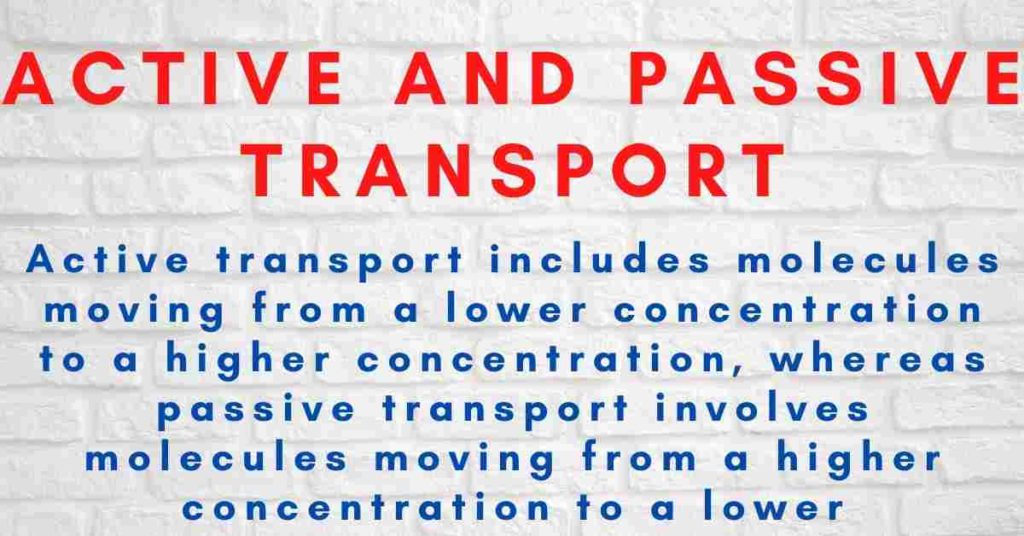Active transport includes molecules moving from a lower concentration to a higher concentration, whereas passive transport involves molecules moving from a higher concentration to a lower concentration. Keep reading to know more about the difference between active and passive transport.

Table of Contents
Difference between Active and Passive Transport
| Active Transport | Passive Transport |
| The movement of molecules from a lower concentration to a higher concentration. | The movement of molecules from a higher concentration to a lower concentration. |
| Energy is required | Energy is not required |
| Large molecules are transported actively | Small molecules are transported passively |
| Examples: •glucose absorption by epithelial cells in the villi of the small intestine •Plant root hair cells absorb ions from soil water. | Examples: •Simple diffusion •Osmosis •Facilitated diffusion • |
Active transport requires energy to move molecules in and out of cellular membranes and hence stays active, whereas passive transport does not use any energy for its motions and thus is known as passive. The primary function of these transport systems is to move vital chemicals and ions across the cellular membrane.
Passive Transport
In passive transport, molecules are transported from the higher concentration gradient area to the lower concentration gradient region. The molecules in this process are bi-directional. Because of the lack of resistance, the molecules flow downhill and there is no need for energy. The primary goal of passive transport is to maintain concentration equilibrium. This transportation is present in the body’s liver, kidneys, and lungs.
Passive transportation is further subdivided into four groups;
- Osmosis (molecules move through a selectively permeable membrane)
- Diffusion (movement from more concentration to the less concentration through the permeable membrane )
- Facilitated diffusion
- Filtration (movement of molecules across the concentration gradient)
Active Transport
The molecules are transported from the lower concentration gradient area to the upper concentration gradient region via active transport. Because of the unidirectional process, the molecules are pumped upward, necessitating the use of energy.
Active transport aids in the movement of bigger cells and molecules such as proteins, lipids, carbohydrates, and so on.
Conclusion
This article discusses the difference between active and passive transport systems for the transportation of molecules and ions. Active transport involves molecules moving from a lower concentration to a higher concentration, whereas passive transport entails molecules moving from a higher concentration to a lower concentration.
More Interesting Topics
Dynamic Viscosity-An Overview
Fluoroantimonic acid-Super Acid
CH4 Polarity
Magnetic Permeability
Light Energy| 5- Easy Examples
Is Titanium Magnetic?
How Much is a Liter of Water?
Laminar Flow| Physics
- BCl3 Lewis Structure in four simple steps - November 1, 2023
- PH3 Lewis Structure in four simple steps - October 8, 2023
- PF3 Lewis structure in four simple steps - September 24, 2023



